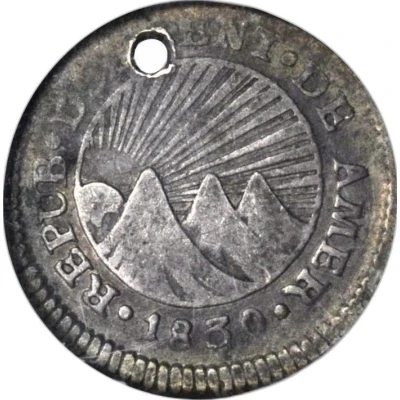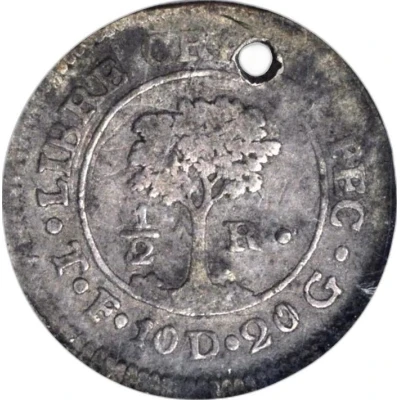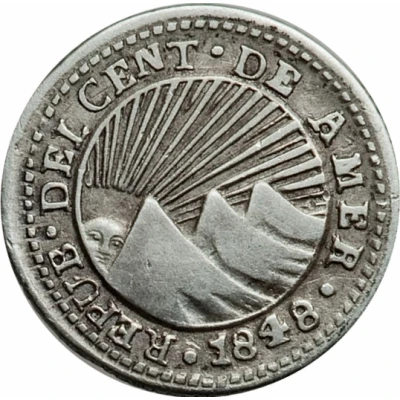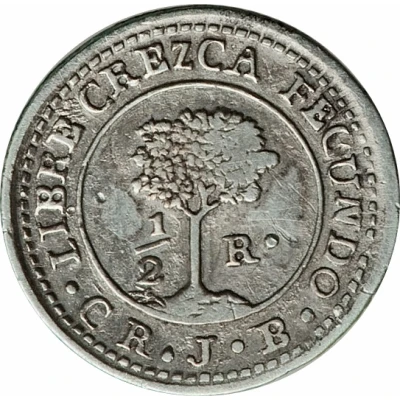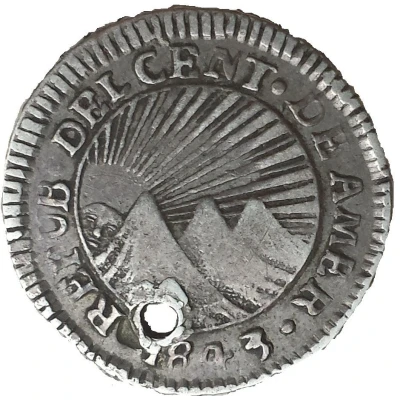
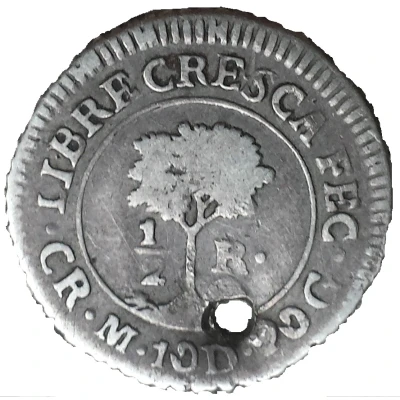

© Benoît31
½ Real Costa Rica
| Silver (.903) | 1.6899 g | 15.5 mm |
| Issuer | Federal Republic of Central America |
|---|---|
| Period | Federal Republic (1821-1841) |
| Type | Standard circulation coin |
| Years | 1831-1845 |
| Value | ½ Real |
| Currency | Real (1824-1851) |
| Composition | Silver (.903) |
| Weight | 1.6899 g |
| Diameter | 15.5 mm |
| Shape | Round |
| Technique | Milled |
| Orientation | Medal alignment ↑↑ |
| Demonetized | Yes |
| Updated | 2024-10-04 |
| Numista | N#49158 |
|---|---|
| Rarity index | 90% |
Reverse
Tree divides denomination.
Script: Latin
Lettering:
•LIBRE CREZCA FEC•
½ R.
CR•E•10D•20G
Translation:
Free grows fertile
Costa Rica E 0.902777
Interesting fact
The ½ Real coin from Costa Rica, issued between 1831 and 1845, has an interesting feature. It was made of silver with a purity of .903, which was a common practice during that time period. However, what makes it stand out is that it was one of the first coins to use the "Cincinnati" method of coinage, which was a new technique that allowed for the production of coins with a higher level of precision and detail. This method involved the use of a special machine that could stamp the coin dies with greater force and accuracy, resulting in coins with more detailed and sharper designs. This innovation in coin production helped to set the standard for future coinage and made the ½ Real coin a unique and interesting piece of numismatic history.
